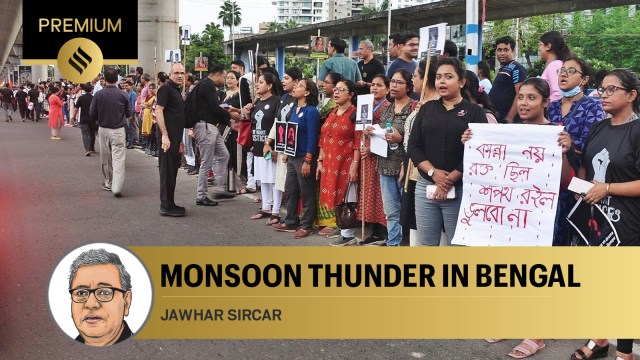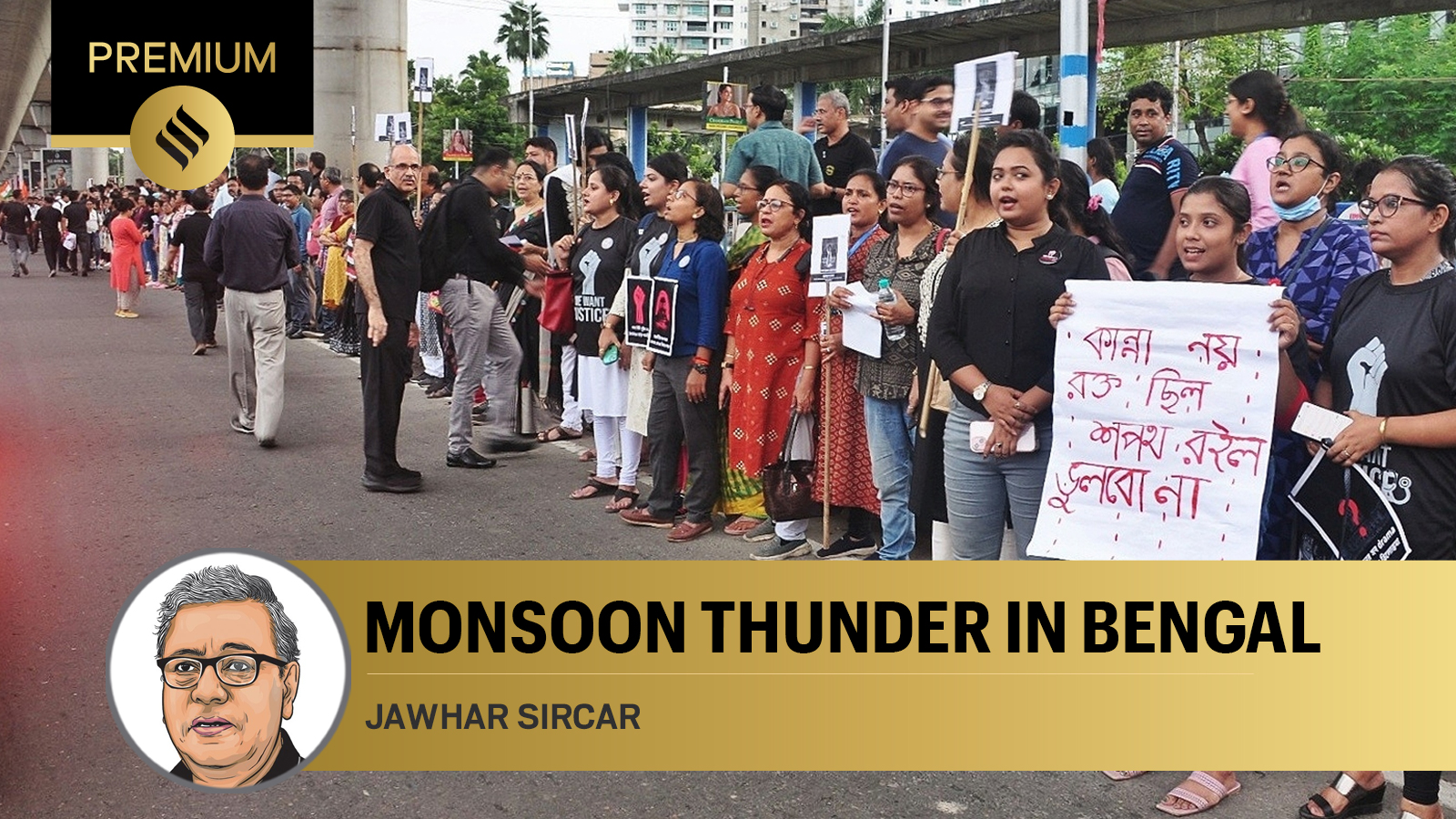
What started as a protest against the heinous rape and murder of a junior doctor in a government hospital in Kolkata attached to the famous R G Kar Medical College has snowballed into an unprecedented movement for justice and the safety of women. It is ironic that it took place and continues to rock the state that has a reputation for standing up for women’s rights and empowerment. Iconic women writers like Toru Dutt, Rasa Sundari Devi and Swarnakumari Devi had spoken up, courageously and in public, right from the 1870s. In December 2023, the National Crime Records Bureau declared Kolkata to be the safest city for women, even as it reported a 30 per cent rise in crimes against women between 2014 and 2022 across the country.
Why, then, were so many lakhs of women out on the streets of Kolkata and in so many other places in Bengal and beyond, at such short notice, to “reclaim the night” on the eve of Independence Day? This will surely go down in history as the biggest demonstration of women’s solidarity and anger against “the system”, and it continues unabated for over a month, in its different forms and hues. The victim, aptly christened as Abhaya, the dauntless, is synonymous with women’s power, supported by most men — who marched along with millions of their sisters and mothers. What mystifies one the most is how this spontaneous outburst sustains and recharges itself, ever day, with no centralised leadership or organisational structure and funding.
Having seen and been part of students’ movements from 1967, through the turbulent period of Naxalism and other shades of left wing rebellion, one can say without fear of contradiction that this unending expression of public angst is the longest and the most spontaneous that one has seen. It is not confined to a few select spots like the turbulence against the Citizenship Act, but is randomly and unpredictably dispersed all over the metropolis and beyond, and the numerous demonstrations are independent of each other. The doctors’ agitation spread all over the country, while the women-led public upheaval has found resonance across the seven seas.
Common sense dictates that it cannot be just to demand justice in a single criminal case. Justice for Abhaya is surely the movement’s guiding spirit, but the ramifications of the protest go well beyond — to encompass gender-based inequities per se and against the dark underbelly of an otherwise-undeniably popular government that sweeps each and every poll in Bengal for 14 years at a stretch. In a sense, it marks not the beginning of the end for Mamata Banerjee, as her opponents would love to imagine — but the first step of the major reclamation of women’s space in public life in India. The “dark underbelly” referred to exists in every city — from Harlem to Howrah — and every government and political party everywhere patronises muscle power and tolerates, permits or encourages seamy wheeler dealers and their nefarious cousins. This confessional admission or observation, call it what you will, is promoted by the experience of over four decades in the bureaucracy, both in the state as well as at the Centre, and after three very valuable years spent in the heart of politics. No state or party is free of its dark patches, but where Bengal is concerned, the issue is aggravated because people are politically and emotionally more charged. They have decided, almost semi consciously, that enough is enough.
The state government, however, refuses to admit that there is a popular outburst of public angst against it. It is decried for the inept handling of the gruesome crime at RG Kar Hospital and then for actually rewarding the college principal at whom all fingers were pointed. Had it acted sternly and demonstratively by punishing him and those officials responsible for unprofessional or inept conduct, public reaction may have died down. Now the common man is convinced — thanks to periodic revelations in the mainstream and social media (the veracity of all of which is yet to be vouched for) that the state administration was either absolutely inefficient or is trying to “cover up” something sinister. It was painful to see how the only woman chief minister’s past and proven track record of standing up for women and supporting their empowerment (as few states can even think) was blown into the wind in just a few days with a few wrong steps. Perceptions rule the day, and accusations fly all over as conspiracy theorists rule the media.
At the bottom of it all lies a less-articulated disgust at the corruption of a section of the ruling party that demonstrates its newly acquired wealth and clout, so brazenly displayed in towns and villages. True, such corruption rules many other states as well, but the passionate masses of West Bengal could not care less. Horror and anger over one single crime have coupled with suspicions and disgust at the government’s subsequent maladroit steps to create an explosive situation — when daily demonstrations bring large parts of the metropolis to a standstill. Few are buying the government’s repeated claims that it is all a political conspiracy by the Left and the BJP. Despite some evidence that certain political elements may be involved in some way, the fact is that the largest section of the agitators has vigorously booed out any political leader who sought to add fuel to the fire. Mamata Banerjee of yore would have jumped headlong into the fire and doused it by now, and frankly, until she reaches out to the agitating doctors, it may simmer much too long.
Whatever the future may hold, it is undeniable that this monsoon thunder in Bengal has shown the way for women to recover their rightful space.
The writer is Rajya Sabha MP, Trinamool Congress



